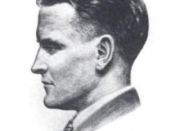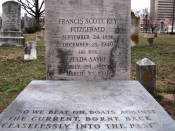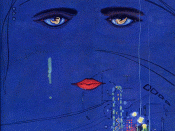Dreams can end in tragedy or death. In The Great Gatsby, by F. Scott Fitzgerald there is both tragedy and death. Jay Gatsby gains money, power, and then throws extravagant parties all in pursuit of his dream. His dream is to be with Daisy but she is married, so he can't have her. In the time period The Great Gatsby was written many people had impossible dreams. Fitzgerald shows through Gatsby how the pursuit of an impossible dream can end in great tragedy.
During the 1920's everything was in excess. "On buffet tables, garnished with glistening hors d'oeuvre, spiced baked hams crowded against salads of harlequin designs and pastry pigs and turkeys bewitched to a dark gold. In the main hall a bar with a real brass rail was set up, and stocked with gins and liquors and with cordials so long forgotten that most of his female guests were too young to know one from another" (44).
Gatsby's parties are shown to have a lot of excess. Since people had more, their dreams were very high. Fitzgerald shows the effects of a dream can ripple out to many people. Towards the end of the book, Gatsby reveals his dream to Tom. This is what starts the ripple effect. Tom's whole world is turned upside down. "'I told you whats been going on,' said Gatsby. 'Going on for five years and you didn't know.'
Tom turned to Daisy sharply.
'You've been seeing this fellow for five years?'" (138). Tom has had an easy and perfect life, so he isn't used to things going wrong. This hurts his life. The next thing that happens is Myrtle gets run over. "A moment later she rushed out into the dusk, waving her hands and shouting; before he could move from his door...


